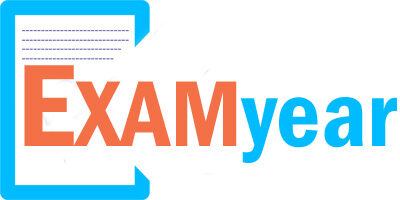Psychology Sample Question Papers
Psychology Sample Question Papers Free Pdf is available. Download Psychology Sample Papers from the below attachments for free of cost. Psychology Sample Papers will definitely helpful for the aspirants to get an idea about the previously asked questions.

Here we provided Sample Question Papers of Psychology for free of cost. Aspirants can find the Psychology Sample Question Paper pdf with answers here. Are you seeking for Psychology Sample Question Papers in Hindi? Here, we update the free pdfs of Psychology Sample Question Papers
Sample Question Papers on Psychology
1. Memory disruption that occurs due to information presented after the material that is to be remembered is known as :
(A) Positive transfer
(B) Negative transfer
(C) Zero transfer
(D) Retroactive interference
2. A common logical error that people make is to seek information that supports their ideas rather than evidence that would invalidate those ideas. This is known as :
(A) Deductive reasoning
(B) The confirmatory bias
(C) Affirming the consequent
(D) Affirming the antecedent
3. Which part of the brain is responsible for biologically driven motivational processes ?
(A) Thalamus
(B) Hippocampus
(C) Limbic system
(D) Hypothalmus
4. The ego attempts to mediate demands of id in relation to real work according to :
(A) The pleasure principle
(B) The reality principle
(C) The primary process principle
(D) Both (A) and (C) are correct
5. Which of the following data collection technique is not well suited for studying attitude ?
(A) Questionnaire
(B) Direct observation
(C) Psychological tests
(D) Physiological recordings
6. Divided attention tasks require the subject to :
(A) Respond quickly to one among many stimuli
(B) Attend to multiple stimuli
(C) Search for missing features
(D) Concentrate on the task
7. In a variable ratio schedule :
(A) Brief pause in response occurs immediately after reinforcement
(B) Negligible responding immediately after reinforcement
(C) Rapid stable rate maintained between reinforcements
(D) Generally lower rate of responding
8. The capacity of short-term memory is assumed to be :
(A) 10 ± 2
(B) 5 ± 2
(C) 6 ± 2
(D) 7 ± 2
9. Which of the following is not a theory of reasoning ?
(A) Mental models
(B) Mental logic
(C) Prospect theory
(D) Probabilistic approach
10. Pancreas releases the following chemical during and just after a meal :
(A) Insulin
(B) Glycogen
(C) Pepsin
(D) Glucagon
11. When a test ‘appears’ to measure what it is supposed to measure, then it has :
(A) Face validity
(B) Split-half validity
(C) Construct validity
(D) Concurrent validity
12. Which of the following is the best example of an operational definition ?
(A) Hypotheses are educated guesses that can be confirmed or rejected by evidence
(B) Class participation is the number of times a student raises his or her hand in class
(C) Cognitive processes include perception, remembering, problem solving and understanding.
(D) Reading ability can be used to predict success in introductory psychology classes
13. Item analysis of an aptitude test could be performed by using :
(1) Alpha coefficient
(2) Item discrimination index
(3) Item difficulty level
(4) KR-20
Select the correct option from the codes given below :
(A) (1) only
(B) (2) and (3)
(C) (3) and (4)
(D) (2), (3) and (4)
14. The circle of Willis is :
(1) Named after English anatomist Thomas Willis.
(2) Formed by anterior branches of internal carotid artery.
(3) Formed by anterior and posterior communicating artery.
(4) Formed by posterior cerebral branches of basilar artery.
Codes :
(A) (1) and (2) only
(B) (1) and (3) only
(C) (1), (2) and (3) only
(D) (1), (2), (3) and (4)
15. Choose the correct sequence that occurs during transmission of a nerve impulse :
(1) Action potential
(2) Refractory period
(3) Resting potential
Codes :
(A) (3) -> (1) -> (2)
(B) (1) -> (2) -> (3)
(C) (3) -> (2) -> (1)
(D) (1) -> (3) -> (2)
16. The projective test that has been used a great deal to measure affiliation need is the :
(A) TAT
(B) MMPI
(C) Sarason Sociability Scale
(D) RIBT
17. In experimental research, the data collected by the researcher are the :
(A) Primary variable
(B) Secondary variable
(C) Independent variable
(D) Dependent variable
18. Which of the following is a correct order of steps in test construction ?
(1) Development of norms
(2) Identification of construct
(3) Item analysis
(4) Validity analysis
(5) Test-retest reliability analysis
Codes :
(A) (2) -> (3) -> (5) -> (4) -> (1)
(B) (3) -> (4) -> (5) -> (2) -> (1)
(C) (2) -> (5) -> (3) -> (1) -> (4)
(D) (1) -> (2) -> (3) -> (4) -> (5)
19. Approaches to perception that involve direct reception of information from environment are called :
(A) Constructivist approaches
(B) Computational approaches
(C) Ecological approaches
(D) Feature analytical approaches
20. When reinforcement is contingent upon number of responses given by respondent it is :
(1) Fixed interval schedule
(2) Fixed ratio schedule
(3) Variable ratio schedule
(4) Variable interval schedule
Codes :
(A) (2) and (3) only
(B) (3) and (4) only
(C) (1) and (2) only
(D) (1) and (4) only
| Question Bank | Psycho Test |
| Mock Test | Research Question |
| Previous Question | MCQs |
| Sample Question | Quiz |
| Model Papers |
21. Information in long-term memory is primarily stored in :
(A) Sensory form
(B) Semantic form
(C) Acoustic form
(D) Tactile form
22. The wrong representation can hinder your ability to solve a problem, especially if you become stuck on that one interpretation. This barrier is called :
(A) The representational problem
(B) Algorithm interference
(C) A blocked solution path
(D) Functional fixedness
23. Selection of moderately challenging tasks characterized the behaviour of people who have :
(A) Fear of failing
(B) High need for achievement
(C) Fear of success
(D) Low need for achievement
24. DIQ is a measure of :
(A) Deviation in personality disorder
(B) Deviation in intelligence disorder
(C) Intelligence in standard scores
(D) Intelligence in the form of ratio I.Q.
25. In a phantom hand experience there is a :
(A) Visual and auditory mismatch
(B) Visual and tactile mismatch
(C) Proprioceptive and auditory mismatch
(D) Visual and proprioceptive mismatch
26. Stimulus similar to original CS will elicit similar response is called :
(A) Generalization
(B) Discrimination
(C) Shaping
(D) Substitution
27. Concepts are learned through psychological processes. That are :
(1) Generalisation
(2) Classification
(3) Categorization
(4) discrimination
Select the correct option from the
codes given below :
(A) (1) and (3) only
(B) (2) and (3) only
(C) (1) and (4) only
(D) (3) and (4) only
28. Which of the following monitors the internal states of the body ?
(A) Drive
(B) Homeostasis
(C) Hemoglobin
(D) Needs
29. Spearman’s two-factor theory defines intelligence as :
(A) Composed of multiple abilities
(B) A global, unitary ability
(C) Composed of 120 unique combinations
(D) A set of primary abilities
30. A person is asked to respond to vague/ambiguous stimuli when taking a :
(A) Pencil and paper test
(B) Projective test
(C) Personality inventory
(D) Behavioural assessment
31. A researcher tries to make sure that subjects in the experimental and control groups are very similar to each other in order to reduce the effects of :
(A) Extraneous variable
(B) Random variable
(C) Dependent variable
(D) Independent variable
32. Gibson’s theory of direct perception implies that :
(1) Perception is used to adapt to environment
(2) Perception is used to control action
(3) When observer moves, optic array changes
(4) Sensory systems are perceptual systems
Codes :
(A) (1) and (2) only
(B) (1) and (3) only
(C) (1), (2) and (3) only
(D) (1), (2), (3) and (4)
33. When an operant response is built by method of successive approximation it is called :
(A) Higher order conditioning
(B) Reinforcement
(C) Shaping
(D) Generalization
34. The …………………… model of memory proposes physical, acoustic and semantic parts.
(A) Structural model
(B) Connectionist model
(C) Processing model
(D) Non-declarative model
35. The activated portion of long-term memory is called :
(A) Declarative memory
(B) Working memory
(C) Sensory memory
(D) Procedural memory
36. In attempting to find and purchase high-quality cosmetics, Hema reminds herself that most expensive brands are the best. Hema’s selfreminder illustrates the use of :
(A) An algorithm
(B) A heuristic
(C) The farming effects
(D) Functional fixedness
37. A substance that can act directly on brain receptors to stimulate thirst is :
(A) Angiotensin
(B) Endorphin
(C) Lipoprotein
(D) Acetylcholine
38. Galton attempted to measure intelligence in order to demonstrate that intelligence was determined by :
(A) Heredity
(B) Experience
(C) Neither heredity nor experience
(D) Both heredity and experience
39. Which of the following test is most similar to Rorschach ?
(A) TAT
(B) 16 PF
(C) TMAS
(D) MMPI
40. Which of the following is not a descriptive/correlational research method ?
(A) Survey
(B) Experiment
(C) Case Study
(D) Naturalistic Observation
41. The following is not a structure included in the meninges :
(A) Mastoid process
(B) Piamater
(C) Arachnoid membrane
(D) Duramater
42. The subcortical brain structure involved in learning, memory and emotion is the :
(A) Hippocampus
(B) Corpus callosum
(C) Uncus
(D) Olfactory bulb
43. Which of the following is a culture free test ?
(A) TAT
(B) PMT
(C) WISC
(D) MMPI
44. The method of internal consistency focuses on :
(A) Reliability
(B) Factor analysis
(C) The use of theory
(D) Folk concept
45. The idea that muscle of the face sends information to the brain and that this affects the emotion We feel is known as :
(A) Schachter’s cognitive theory
(B) James-Lange theory
(C) Darwin’s facial expression theory
(D) The facial feedback hypothesis
46. Cultural norms that regulate the appropriate expression of emotion are called :
(A) Cognitions
(B) Polygraphs
(C) Display rules
(D) Emotional cues
47. Standard Error of Measurement (SEM) of mean statistics is a :
(A) Variability measure of frequency distribution
(B) Variability measure of sampling means distribution
(C) Variability measure of ‘F’ distribution
(D) Variability measure of X2 distribution
48. WAIS IV tests :
(A) Three areas : Verbal, Performance and Freedom from Distractibility
(B) Four areas : Verbal comprehension, perceptual organization, Working memory and processing speed
(C) Three areas : Verbal comprehension, perceptual organization, Working memory
(D) Four areas : Verbal performance, freedom from distractibility and processing speed
49. Which of the following could be described as a problem for which the solution requires insight and restructuring ?
(A) The tower of Hanoi
(B) The water jars task
(C) The nine dot problem
(D) The hobbits and orcs task
50. The term ‘chunking’ refers to :
(A) Systematic ways of encoding information
(B) Repetition to ensure recall
(C) Number and letter-word systems
(D) Rehearsal of an image in mind

